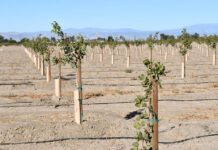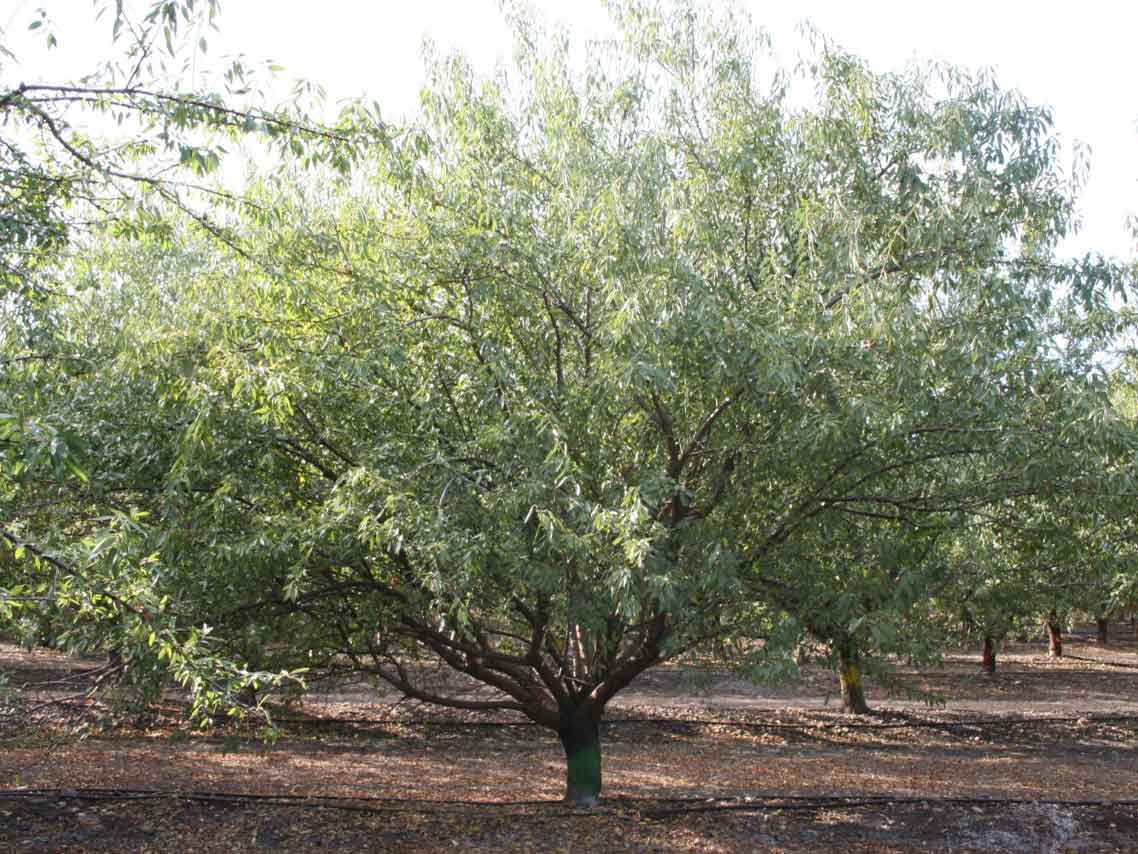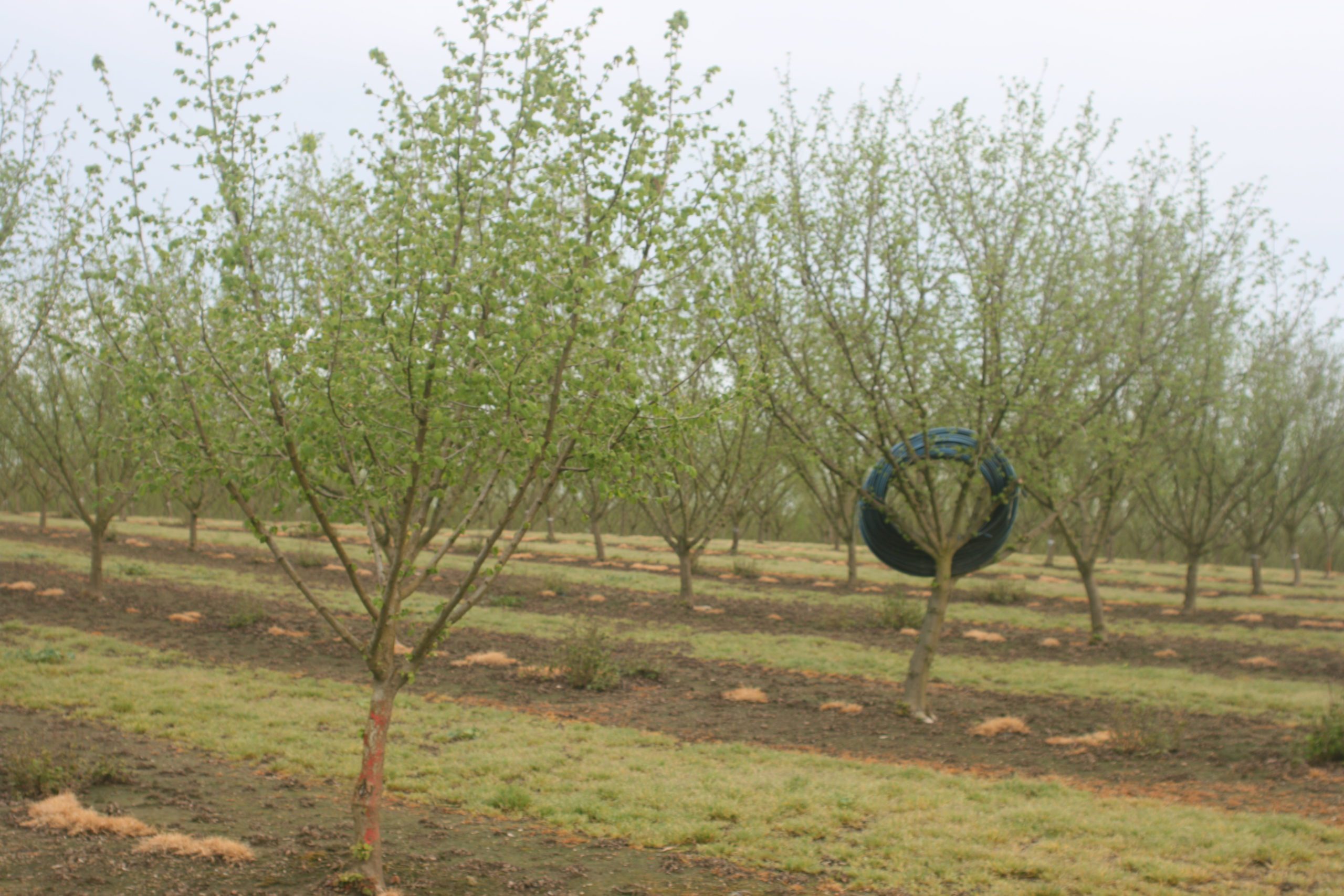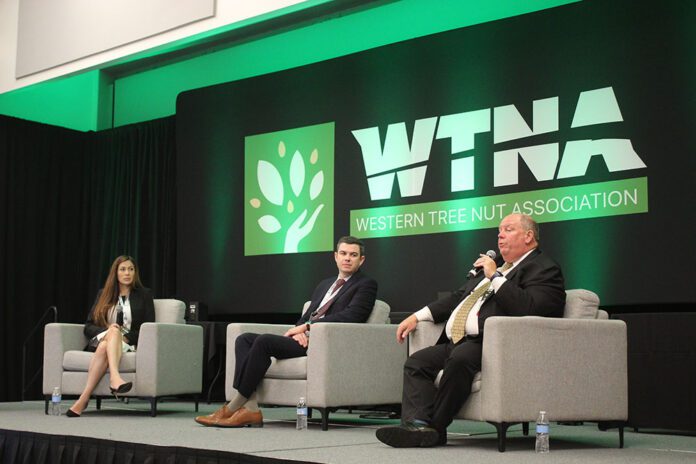
Listen to the audio version of this article. (Generated by A.I.)
From pesticide restrictions to broad packaging laws and energy hikes, the tree nut industry is seeking proactive solutions. Tools such as sterile insect technology show promise, but long-term success depends on unified advocacy, and that’s exactly what the newly renamed Western Tree Nut Association aims to strengthen.
Formerly the Western Agricultural Processors Association (WAPA), the Western Tree Nut Association (WTNA) has expanded its membership to include growers, positioning itself as the voice for the entire tree nut supply chain at a time when representation in Sacramento and Washington, D.C., is more critical than ever.

New Name, Broader Mission
The association’s name change, according to Assistant Vice President Priscilla Rodriguez, reflects a formal shift that aligns with how the organization has already been serving the industry. She said it’s an exciting time for the association, as its board decided to include growers in the membership.
Since its inception in 2012, WAPA had addressed key issues affecting the tree nut industry, including air and water quality and overregulation. Over time, Rodriguez noted, the association became the go-to source for lawmakers and regulators, even on grower-specific concerns, positioning it as a natural representative for the broader industry.
“You’d get regulators calling us, whether it be on grower issues like pesticide, nut harvesting equipment, water issues, they were coming to us because we were the ones in their offices speaking on behalf of the tree nut industry,” she said. “So it was a natural way to include growers because we were already doing that representation.”
The inclusion of growers broadens WTNA’s influence significantly in legislative and regulatory advocacy, expanding its strength in Sacramento and Washington.
“Now we can say we represent the whole tree nut industry versus just a segment,” she said. “It really just does provide that force.”
The rebranding is already making an impact on membership numbers, with 32 new grower-members as of the annual meeting. Rodriguez said all those new members came through word of mouth. The association is still growing on the huller and processor side too, with two new hullers and a new processor added that week, and association membership is also up.
“Regulators… were coming to us because we were the ones in their offices speaking on behalf of the tree nut industry. So it was a natural way to include growers because we were already doing that representation.”
– Priscilla Rodriguez, Western Tree Nut Association
“So things are growing rapidly, and it’s great,” she said.
For Darrell Cordova, a Denair, Calif. grower who grows all three of the state’s top tree nuts, almonds, pistachios and walnuts, WTNA’s inclusion of growers signals hope for greater support on pressing issues like the escalating impact of the Sustainable Groundwater Management Act on Central Valley agriculture.
“We’re paying a lot of money to pump water, and now we’re being told to cut back or face massive penalties,” Cordova said. “The water we’re allowed isn’t enough to keep our crops alive, and it’s only going to get worse.”
With limited credit for groundwater recharge and costly permitting, Cordova fears many small farms, especially those in “white zone” areas without surface water access, won’t survive.
“WTNA can be a voice to help us push for realistic solutions,” he said. “We need support to plan water projects, cover permitting costs and navigate the maze of regulations.”
Cordova attended the meeting in Monterey representing Cortez Growers Association, a century-old cooperative of more than 200 almond growers. With an overwhelming number of agriculture-related regulations in California, he said many lawmakers are disconnected from the realities growers face and urged stronger public education and legislative engagement.
“WTNA can help change that, bring lawmakers to the farm, show them what’s happening and help advocate for policies that ensure farming can continue for future generations,” he said.
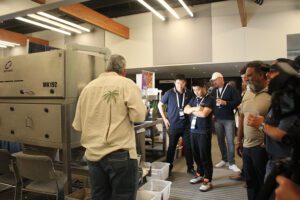
New Legislation’s Hidden Risks for Ag
During a legislative session, WTNA lobbyist Louis Brown of Kahn, Soares & Conway addressed key legislation affecting agriculture, including AB 1264 and SB 54, the former of which would label California tree nuts as ultra-processed foods.
“We’re trying to fix that language so California ag products don’t get this label,” he said.
He also clarified the broad scope of SB 54, the state’s packaging law, which he said is extremely broad and would put anyone who uses shrink wrap to hold items on a pallet in the category considered packaging under SB 54.
“There are a number of requirements that are going to come with the implementation of that regulation that people need to pay attention to,” he said.
Brown stressed the importance of reviewing all legislation carefully, since there are often hidden items, adding that it’s a big part of his job to check the fine print of these bills.
“We read every piece of legislation that’s introduced, and we follow those bills throughout the process to try to ensure the best we can that our agricultural clients are protected, and if they are impacted by a piece of legislation, trying to reduce the burden as much as we possibly can,” he said.

Energy Costs, Climate Policy Add Pressure to Tree Nut Operations
California’s climate and energy policies are creating an increasingly difficult environment for agriculture, warned Michael Boccadoro, executive director of the Agricultural Energy Consumers Association, during his address to WTNA members.
Calling California the world’s fourth-largest economy, he noted the state’s energy costs are more than twice the national average, housing costs are double and gasoline prices are the highest in the country.
“It’s no surprise we have 5.1 million Californians living in poverty,” Boccadoro said.
He explained how the state’s push toward electrification and aggressive climate targets has driven up utility rates, particularly for growers and processors who rely on energy-intensive operations.
“PG&E just requested another 29% increase over the next four years,” he said. “And all three investor-owned utilities are pushing to raise their return on equity due to what they claim is higher financial risk.”
Outlining the growing infrastructure costs tied to California’s clean energy push, including $60 billion in transmission upgrades, $45 billion in wildfire mitigation and additional billions in storage and offshore wind development, he said these costs will be financed by ratepayers.

To push back, AECA has launched multiple initiatives to hold regulators accountable and raise awareness among lawmakers, including Rate Watch and Affordability Watch California to track and spotlight the true cost of energy and climate policy.
“Legislators and even senior staff in the governor’s office are paying attention, because 3.4 million Californians are behind on their utility bills,” Boccadoro said. “Rates matter.”
He also highlighted AECA’s role in defeating or delaying key bills that would have further raised energy and compliance costs, including SB 684 and SB 1243, as well as efforts to shield agriculture from solar contract changes under AB 942.
But the work is far from over, according to Boccadoro, who said that just playing defense isn’t enough.
“We also need to go on offense and challenge the state’s assumptions on renewable portfolios and greenhouse gas targets,” he said. “It makes no sense for California to cripple its economy while other jurisdictions move more cautiously.”

Regulatory Pushback, Pest Solutions Highlighted
The sense of urgency to support growers as they battle regulatory and pest issues shaped much of the discussions in Monterey. WTNA President and CEO Roger Isom opened with an update on emerging regulatory threats, including the advance notification rule for restricted materials such as 1,3-D.
Isom said he was initially vocal in his concern that the rule would be used to oppose key pesticide applications, particularly 1,3-D, but noted they haven’t seen that yet.
“It’s been very, very quiet,” he said.
Amid growing concerns around California’s Sustainable Pest Management initiative, Isom underscored the association’s continued opposition to the state’s plan to eliminate all priority pesticides by 2050.
“When we use pesticides as per the label, there are no issues, and we’re going to push back every opportunity we have,” he said.
Looking to solutions, Isom also highlighted progress with sterile navel orangeworm trials. Now in their third year, the trials have shown reduced damage in participating orchards, with expansion plans already underway.
“This year we’re expanding to 32 sites, almonds and pistachios, and analyzing results closely,” Isom said.
Closing with a call to action, Isom reminded attendees that outreach remains one of the industry’s strongest tools for change.
“The most effective thing we can do is get these folks out to the farm and show them how we really operate,” he said.

Kristin Platts | Digital Content Editor and Social Correspondence
Kristin Platts is a multimedia journalist and digital content writer with a B.A. in Creative Media from California State University, Stanislaus. She produces stories on California agriculture through video, podcasts, and digital articles, and provides in-depth reporting on tree nuts, pest management, and crop production for West Coast Nut magazine. Based in Modesto, California, Kristin is passionate about sharing field-driven insights and connecting growers with trusted information.








